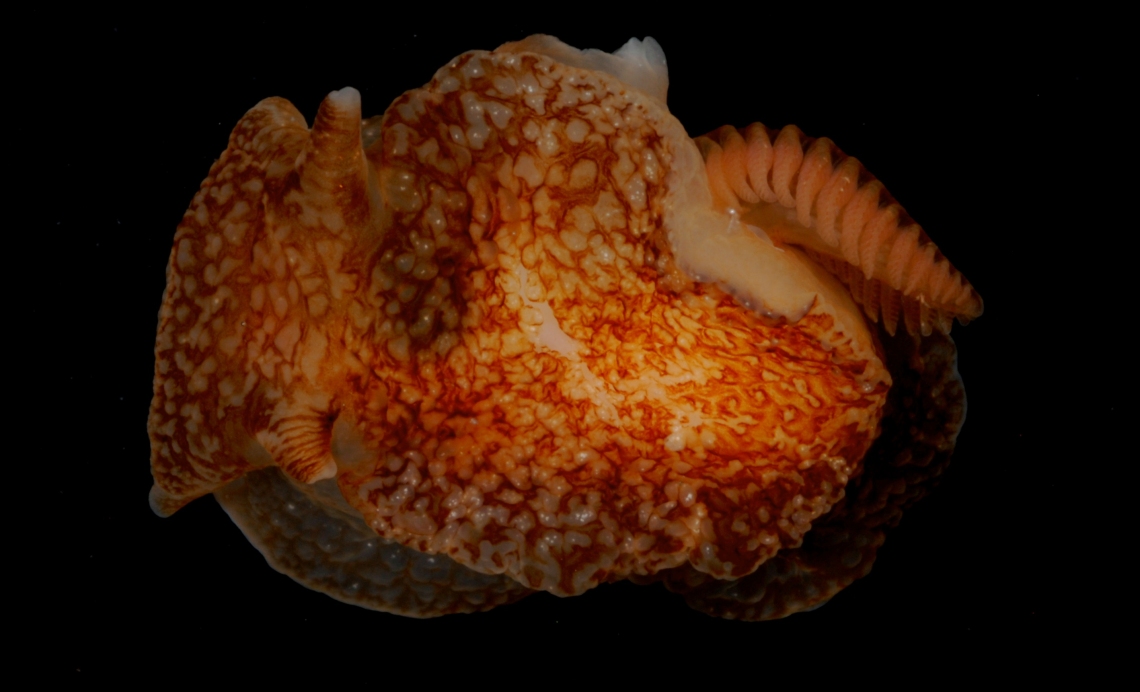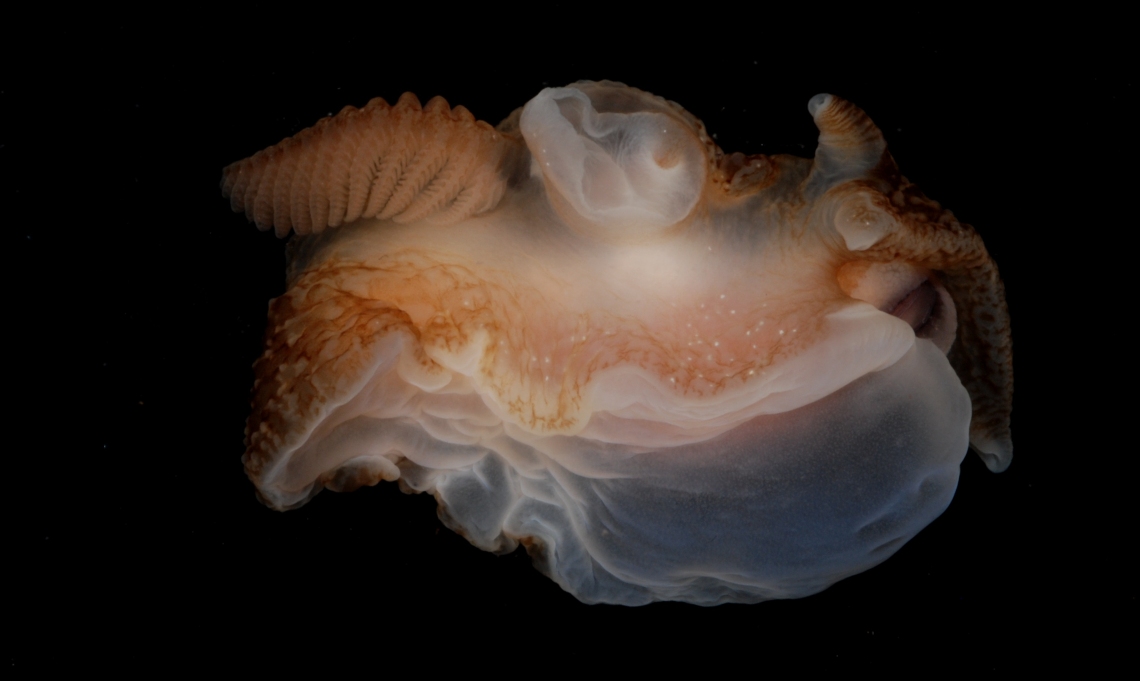The grey side-gilled seaslug, Pleurobranchea maculata (Quoy & Gaimard, 1832) is notorious in New Zealand as it was found to be the culprit of several dog deaths in 2009.
Scientists at Cawthron found that the slugs contain Tetrodotoxin (TTX), which is a powerful neurotoxin and varies in concentration in the slug bodies according to season and the place they are collected from. It was most potent in slugs collected between June-August, which is the egg laying season and indicates that the slugs carry this for defensive purposes for their eggs and larvae (Wood et al., 2012). Just half a teaspoon of the slug body is enough to kill a human!
Pleurobranchea maculata is native to New Zealand and can be found in a wide range of habitats around the coast from the low intertidal to 250 m. It is also found in South Australian waters, and has been reported in Japan and Sri Lanka. It is an active predator and is out feeding during the night and day.
The beautiful 2cm specimen was collected from the Rumble V Seamount on the Kermadec Ridge, outside the normal depth range for the species at 405 m. This means it might turn out to be a different species and needs to be confirmed with genetic analysis. Morphologically it fits within the maculata species, with its mottled body, rhinophores at the sides of the head, no internal shell, and the mantle which is much smaller than its foot. Its large side gill is really obvious in our photos and is the main character that sets it apart from nudibranchs.
Further information:
- NIWA - Toxic sea slugs fact sheet
- Science Learning Hub - Grey side-gilled sea slugs
- Auckland Museum - Toxic sea slug



